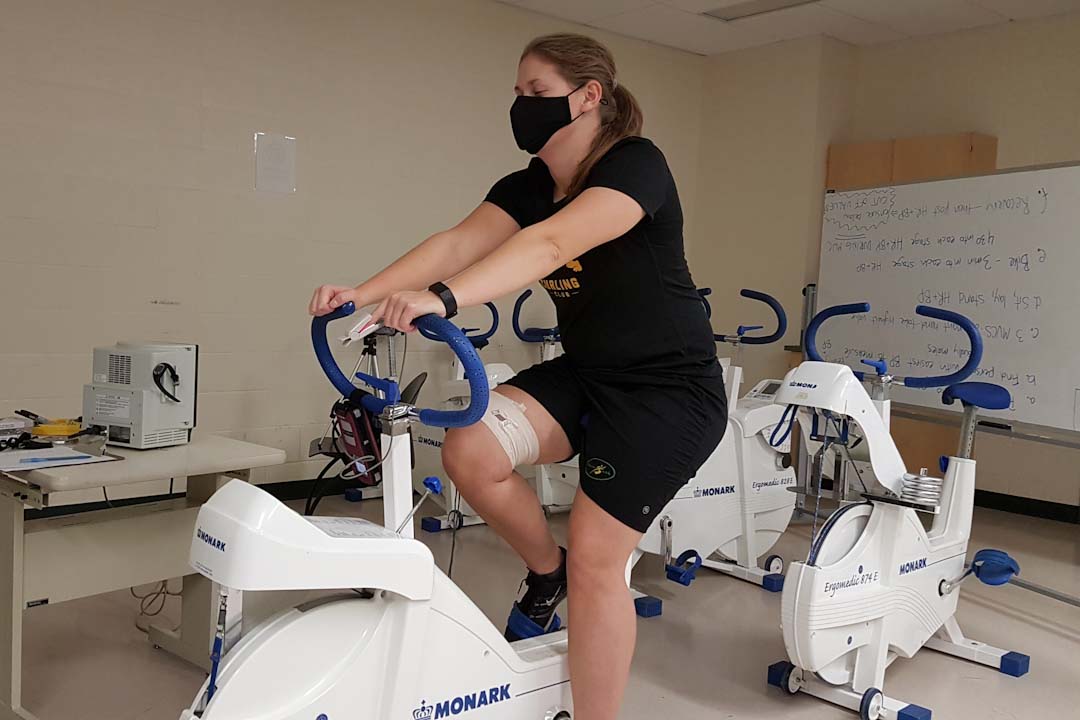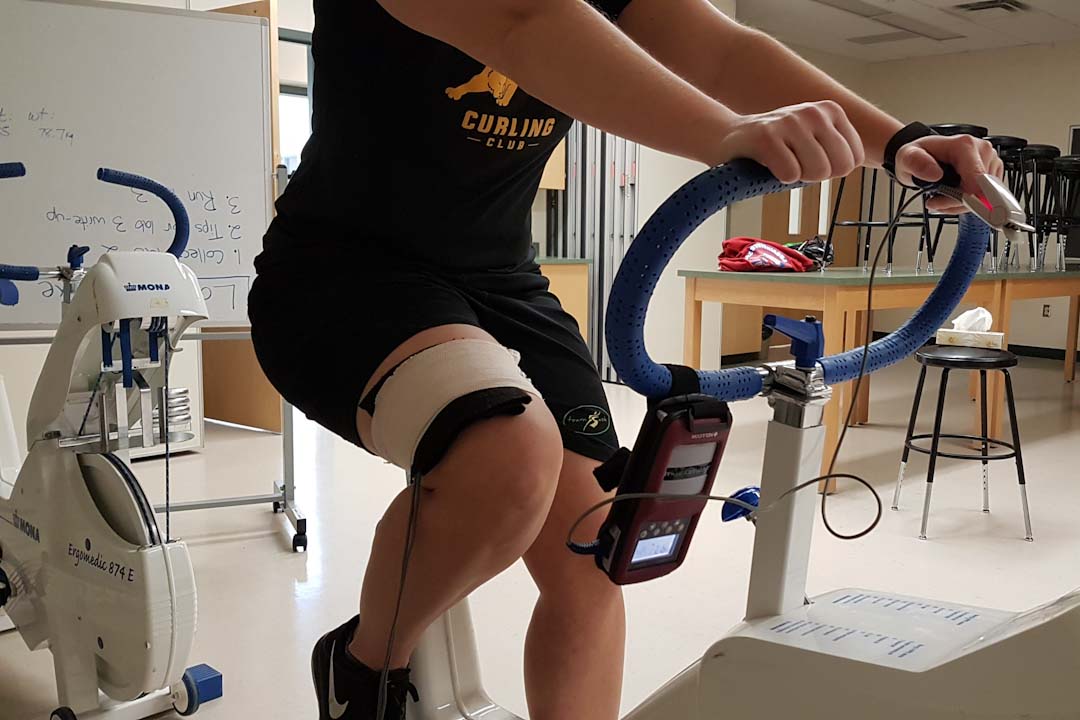
USask researchers find face masks don't hinder breathing during exercise
A new University of Saskatchewan (USask) study has found that exercise performance and blood and muscle oxygen levels are not affected for healthy individuals wearing a face mask during strenuous workouts.
By Chris Morin, and USask Research Profile and ImpactUPDATE APRIL 27, 2021: Confirmed – facemasks can be safely worn in a variety of exercise settings by healthy or unhealthy people of all ages without detrimental effects.
USask researchers have now reviewed 22 studies that evaluated wearing facemasks during exercise in over 1,500 individuals and found facemasks resulted in only small increases in lung carbon dioxide, with no effects on blood or muscle oxygen levels, and no effect on exercise performance. The findings are published in the journal Applied Physiology, Nutrition, and Metabolism.
Original article:
Questions have been raised as to whether mask wearing during vigorous exercise might compromise oxygen uptake or increase the rebreathing of carbon dioxide, leading to a condition (hypercapnic hypoxia) whereby increased carbon dioxide displaces oxygen in the blood.
But the study, published Nov. 3 in the research journal International Journal of Environmental Research and Public Health, did not find evidence to support these concerns.
“Our findings are of importance because they indicate that people can wear face masks during intense exercise with no detrimental effects on performance and minimal impact on blood and muscle oxygenation,” the researchers state.
“This is important when fitness centres open up during COVID-19 since respiratory droplets may be propelled further with heavy breathing during vigorous exercise and because of reports of COVID-19 clusters in crowded enclosed exercise facilities.”
The study evaluated use of a three-layer cloth face mask—the type recommended recently by Dr. Theresa Tam, Canada’s Chief Public Health Officer. “Results using a single-layer cloth mask may differ,” the researchers note.

The study, involving 14 physically active and healthy men and women, controlled for the effects of diet, previous physical activity, and sleep during the 24 hours prior to the test.
“If people wear face masks during indoor exercise, it might make the sessions safer and allow gyms to stay open during COVID,” said Dr. Phil Chilibeck (PhD), a professor in the USask College of Kinesiology, who was a co-author of the study. “It might also allow sports to continue, including hockey, where transmission of COVID-19 appears to be high.”
Participants were required to do a brief warm-up on a stationary bike. The exercise test involved a progressive increase in the intensity on the bike while they maintained a required pedal rate. Once they could not sustain the pedal rate the test was over.
“Usually a participant reaches exhaustion on this test in six to 12 minutes depending on their fitness level,” said Chilibeck.
The team assessed the participants, who did the test three times each, once wearing a surgical face mask, once wearing a cloth face mask and once with no face mask. The team recorded the participants’ blood oxygen levels and muscle oxygen levels throughout the test using non-invasive measurement tools.
Chilibeck notes the study is timely, as Saskatchewan has recently issued new public health orders that go into effect this week making masks mandatory in indoor public spaces in Regina, Saskatoon and Prince Albert to help curb the spread of COVID-19.
While the new provincial mask rules state that persons working out in a gym, ice rink or other recreational space are exempt, Chilibeck recommends that people wear masks in these facilities to keep safe, especially in these areas where people may be breathing harder due to vigorous exercise.
The USask research team also included kinesiology alumni Keely Shaw and John Ko, Dr. Scotty Butcher (PhD) from the School of Rehabilitation Science, and Dr. Gordon Zello (PhD) from the College of Pharmacy and Nutrition.
The study can be found here: https://www.mdpi.com/1660-4601/17/21/8110

